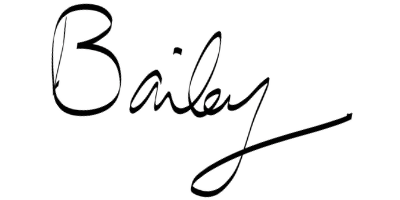This post may contain affiliate links. This means Bailey’s Puzzles might receive a commission on the sale of certain items. This is at NO additional cost to you. Visit the policies page to learn more.
Nurikabe is a fun logic puzzle that comes in a variety of grid sizes (the larger the grid, the harder the puzzle).
How to Play Nurikabe
Each Nurikabe puzzle consists of a grid that contains clues in various places. The goal is to create islands by adding “walls” between clues so:

- Each island contains exactly one clue
- The number of squares in the island is equal to the value of the clue
- All islands are isolated from each other horizontally and vertically
- There are no walls of 2×2 or larger
- When finished, all the walls will form a continuous path
Nurikabe Techniques & Example
Let’s learn some nurikabe techniques using the blank nurikabe example from above.

Island of 1
Let’s start by looking at all the islands of 1.
Rule: the number of squares in the island is equal to the value of the clue
This means that clues of “1” are completed islands. There will be no additional blank squares on these islands.
Rule: all islands are isolated from each other horizontally and vertically.
This is where those green X’s come in. To make it an island, it cannot have any blank squares beside, above, or under.

Separating Clues
Rule: all islands are isolated from each other horizontally and vertically.
This means that you must separate all clues by a solid block. Look for CLUE-BLANK-CLUE and fill in the middle square as solid.
In our example, I’ve placed an X near the middle (below the 5 and above the 2) and another X near the bottom (between a 5 and 2).

Unreachable Squares
There’s no specific rule related to this technique. Sometimes there will be squares (usually in the corners and along the edges) that cannot be touched by a clue.
In our example, I’ve chosen the 5 near the bottom. No matter how you count, you cannot include the bottom-left corner square in the 5.
I’ve also looked at the 2 near the bottom. The arrows indicate the possibilities for our island of 2. The remaining squares have no clues that can touch them so they must be part of the wall.

Island Conflicts (part 1)
This is a two-step technique (the next image will make it much clearer).
If the island of 2 goes left, up, or right, then there are 3+ squares that cannot be used (blue X’s).

Island Conflicts (part 2)
This is the second part of our island conflict.
If the island of 2 goes down, then there are 4+ squares that cannot be used otherwise (yellow X’s).
How does this help? Well, we can see now that there are 2 squares that must be wall (they have blue AND yellow X’s).

Smaller than 2×2
Rule: there are no walls of 2×2 or larger.
This means the blank square in the circled 2×3 block must be part of an island. If it wasn’t an island that block of wall would be greater than 2×2.
This also finishes an island of 2, so we can cross off any vertical or horizontal blocks touching it.

Smaller than 2×2
Rule: there are no walls of 2×2 or larger.
This means that the blank square in the circled 2×2 block must be part of an island.
The 5 is the only island big enough to reach the blank. There are two possible island sizes (pink and blue).

Use Logic
Looking at our island possibilities from above, it’s clear that both options use 3 of the same squares (the original square that’s part of the 2×2 blocks and 2 more to the right).
No matter which island forms, we also know that 2 islands can’t touch (which is why there’s an X between the 2 and the bottom island).
We also know that the 5 island isn’t going to use the two other squares that I’ve placed X’s in.

Island of 2
At this point, we can check out some small islands, like this island of 2.
We know that the island will add one block, either left or right. We can also see that the square to the right and down has to be wall.
If the island goes to the left, then the square to the right would be part of the wall which would make that section of wall 2×2 or greater. Not okay!
Therefore, this wall has to go to the right! (Don’t forget to surround your new island with walls vertically and horizontally.

Wall Continuity
Rule: when finished, all walls will form a continuous path.
This means that all those single blocks of wall must eventually connect to the rest of the wall.
In our example, we can see in the top-left corner that one block of wall can only go in one direction. So it must.

Can you finish?
Alright, now you know some nurikabe techniques! Can you finish the puzzle?
Here’s a hint/note: one of the twos in the bottom left must make it’s island into the circled block to avoid a 2×2 section of wall.
The solution to this puzzle can be found at the end!
Get Nurikabe Puzzles
Now that you know how to play Nurikabe, why not grab some free Nurikabe puzzles or buy a book of Nurikabe puzzles.


Happy Puzzling,


Solution for the Example





